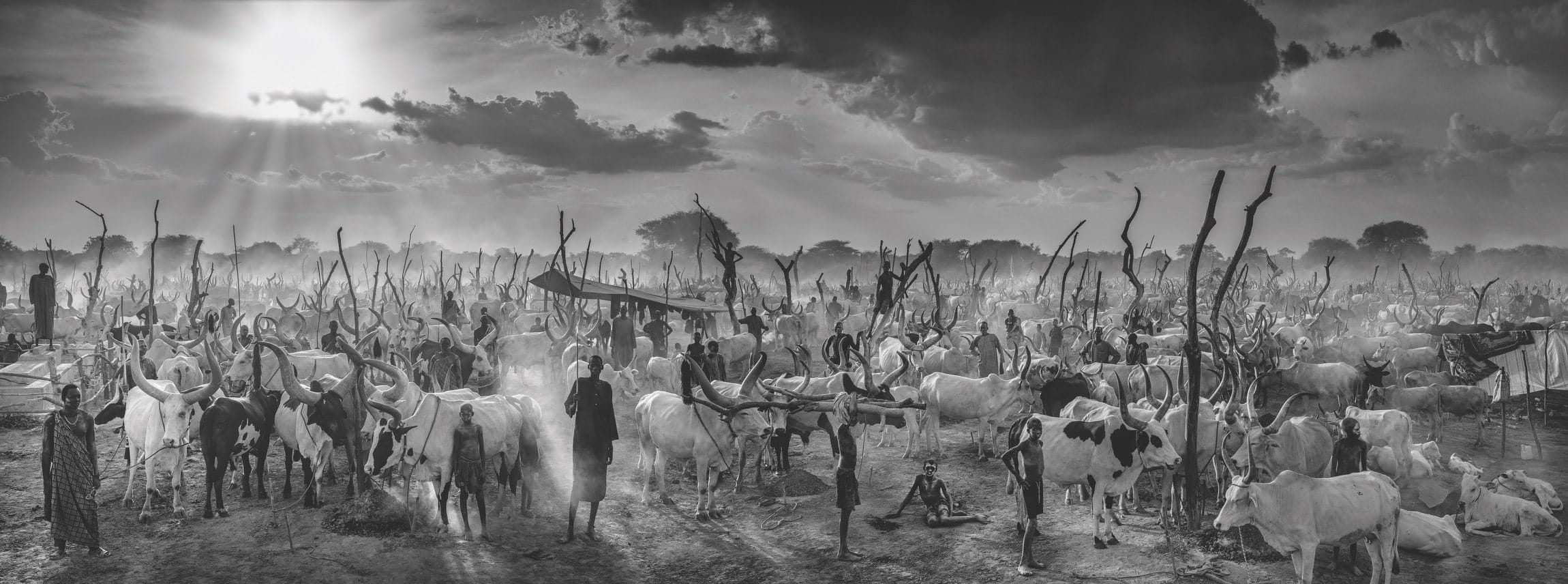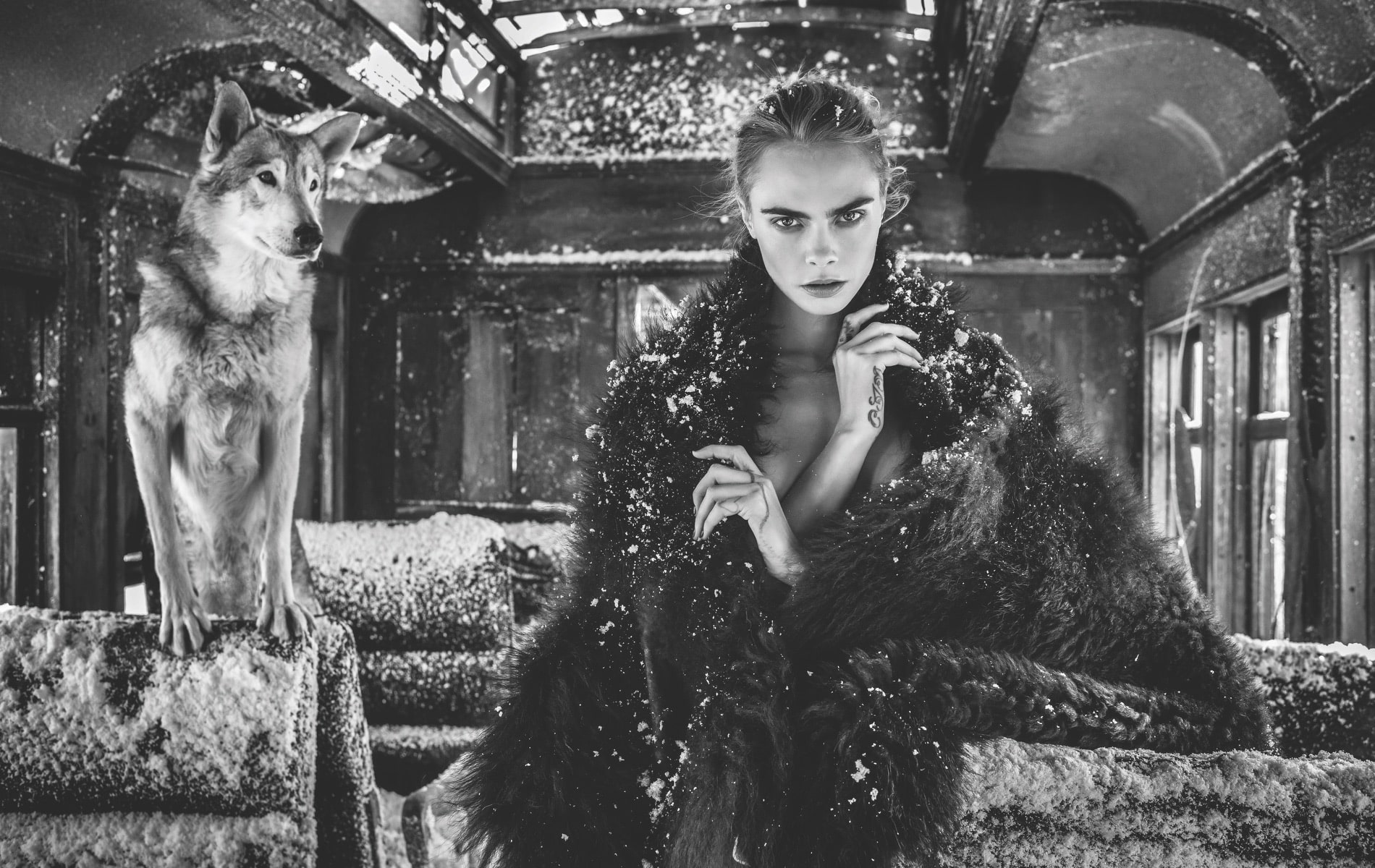
VIE_Magazine_JUL23_article_David_Yarrow_HERO-min
The Girl on the Train | Montana, 2020 | “This old railway carriage was built in Montana in 1902 and operated until 1968. It now lies abandoned in the ghost town of Nevada City and serves as a reminder of the busier days in the mountains,” says Yarrow. “I first visited the train in 2015 and immediately saw its potential for a staged shot. Half the window areas are open to the elements, and in the winter, the snow often overwhelms the decaying interior . . . Taking the female icon Cara Delevingne to a unique site like this, so far from anywhere vaguely on the map, was an opportunity not to be wasted. This is not a job for the precious; the carriage is fragile, and getting on board was not easy. But Cara, as I know from working with her previously, is not precious; she is game for anything that is creative and authentic. The camera loves her, and the styling—in an old buffalo skin coat—deliberately plays to a timeless story. She pings out of the train. Sometimes an artist creates something that can’t be copied, and I think this is one such work. We would like to thank the Nevada City Old Town Museum and Music Hall for collaborating on this project.”
The Journey to a Single Frame
The Beauty of Visual Storytelling
By Jordan Staggs | Photography by David Yarrow
“It is the journey that matters, not the destination. I have no idea what I will be doing in a year, but it will be a good ride,” says Scottish photographer David Yarrow.
This concept is nothing new to him. As an eighteen-year-old with a camera and a love of sports, the last thing on his mind was that his creative journey would one day lead him to become one of the most successful commercial photographers in the world. His compelling, often black-and-white images have graced thousands of walls, galleries, magazine covers, and advertising campaigns. Still, starting out, he says photography was “a way to attend as many sporting events as possible and even to be paid to be there. The crowds, the news, the passion. I loved sport as a teenager, and the camera gave me the excuse to justify the addiction.”
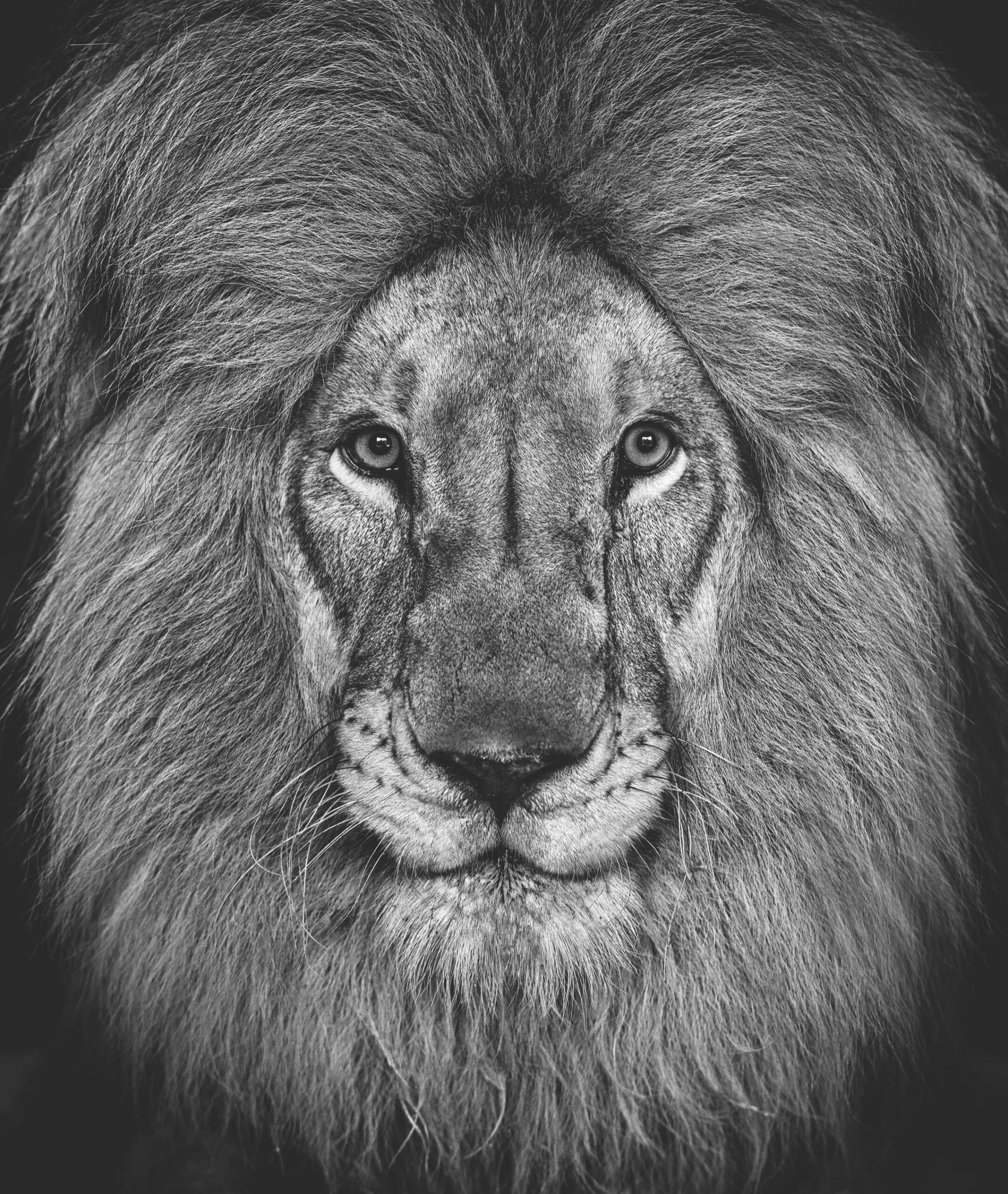
The King’s Speech | South Africa, 2022 | “Most tight portraits of lions, including mine, disappoint either because the camera is above the lion’s eye or the distance between camera and subject is further than one would like—or perhaps the lighting conditions compromise the textural detail,” Yarrow explains. “In most cases, it is all three of these issues, and this is no surprise as lions do not live in studios and are also extremely dangerous. The opportunity to take this portrait of the most handsome lion in Kevin Richardson’s sanctuary in South Africa came about because of the cave we had built for our Daniel project. There was just one source of light from the opening behind my cage, and by the time the light reached Yame’s face, it was even and kind. This allowed me to glorify the detail in a lion’s face in a way that I have never previously been able to do.”
Although he studied business and accounting at university, photography—and the travel experiences and stories he accumulated while shooting events—was waiting in the wings for Yarrow to reach the point that would launch his fine-art career.
“All my training was in the field,” Yarrow says. It wasn’t about the money. “I think in the early days—very early days—I enjoyed being at the events as much as filming them. It took time for the seeds to turn into shoots.”
In 2011, an unexpected plot twist entered Yarrow’s story while he was photographing sharks in South Africa. He had been at it for nine days without any great shots and was nearly ready to give up. “After twenty-eight unsuccessful hours lying face down on a boat deck in False Bay near Cape Town, I captured an image: Jaws.”
The photo, an awe-inspiring shot of a great white shark breaching while chasing a seal, was worth not only a thousand words but also, eventually, thousands of dollars.

Route 66 | Holbrook, Arizona, 2022 | “Route 66—The Mother Road—will always be a symbol of America’s postwar freedom and geographical mobility,” says Yarrow. “It evokes imagery of roadside motels, diners, and 1950s Cadillacs. America is the home of the road trip, and Route 66 is its poster child . . . In the autumn of 2022, I scouted for shooting locations in California and Arizona that would emphatically offer a Route 66 vibe, and I found it to be a challenge. So many motels and diners along the route are either abandoned or, worse still, have become rather kitsch tourist attractions. To find a set that was both authentic and operational seemed mutually exclusive. But then I stumbled across the town of Holbrook, one hundred miles east of Flagstaff in Arizona. There are some real gems in this small town, and none more so than the Wigwam Motel that saddles up right next to Route 66 . . . I chose Josie Canseco as the lead on this project as I knew she could wear a glamorous 1950s vibe very well. I was right, and this photograph is as good as I could have imagined when I started exploring the creative concept. Have you slept in a Wigwam lately?”
“In many ways, it was a picture that changed my whole approach to the monetization of photography,” Yarrow recalls. “The reality was that my publishing fees from the sale of the image to magazines and newspapers did not cover the expenses I incurred in taking it. That seemed quite instructive. Then a lawyer from Houston nicknamed ‘Jaws’ called me up asking for a print for his office. He wanted to buy the print for several thousands of dollars, and that prompted deep consideration. I had my epiphany; the future for me lay in the fine-art market.”
Yarrow says even with this plan set in motion by the aquatic beast and the shark from Houston, it took him another four years to hone his business model as a fine-art photographer. Now fifty-seven, the celebrated storyteller says he really only started making money from photography in his late forties.
His work, he says, is a celebration of storytelling and authenticity. “We are all storytellers—from Taylor Swift all the way down. A photograph can tell a story, but for it to do so in a compelling way, the frame will need to sweat. I use layers to tell a story, just as painters have done for generations. It is never easy to capture everything in 1/250 of a second, but we are getting better at it.”
As it turns out, that fraction of a second can say more than most people would ever imagine. It can spark imaginations, take viewers back in time, inspire songs and stories, and evoke feelings they might never have felt. It can start conversations and share missions. It can also just look damn cool, as evidenced by Yarrow’s work. His subjects are varied, from sports stars to wild animals and supermodels, including Cindy Crawford, Cara Delevingne, Alessandra Ambrosio, and David Gandy, to name a few.
“It’s all about trust,” he says of working with such big names. “If you are working with extraordinary people whose time is an opportunity cost, you can’t let them down. You must make sure their days working with you are happy, good, and memorable. If you can combine the removal of stress with art creation, there’s more chance of them coming back to work with you. It is important to remember that when you strip away fame, we are all the same. Fame is just an amplifier. Someone like Cindy Crawford is a wonderful woman; fame has just made her even more special. She is the most successful model of all time for good reason.”
Authenticity is always a good start.
Crawford, who has starred in several of Yarrow’s shoots and become a personal friend, shares his passion for giving back to worthy causes. Their collaborations in 2018 and 2021 collectively raised over six million dollars for the American Family Children’s Hospital. Yarrow is also involved with several environmental conservation organizations, including Tusk Trust, Wild Ark, Kevin Richardson Foundation, the African Community and Conservation Foundation, and more. His work has raised over twelve million dollars for efforts to protect wildlife around the world and for pediatric cancer care organizations, including AFCH.
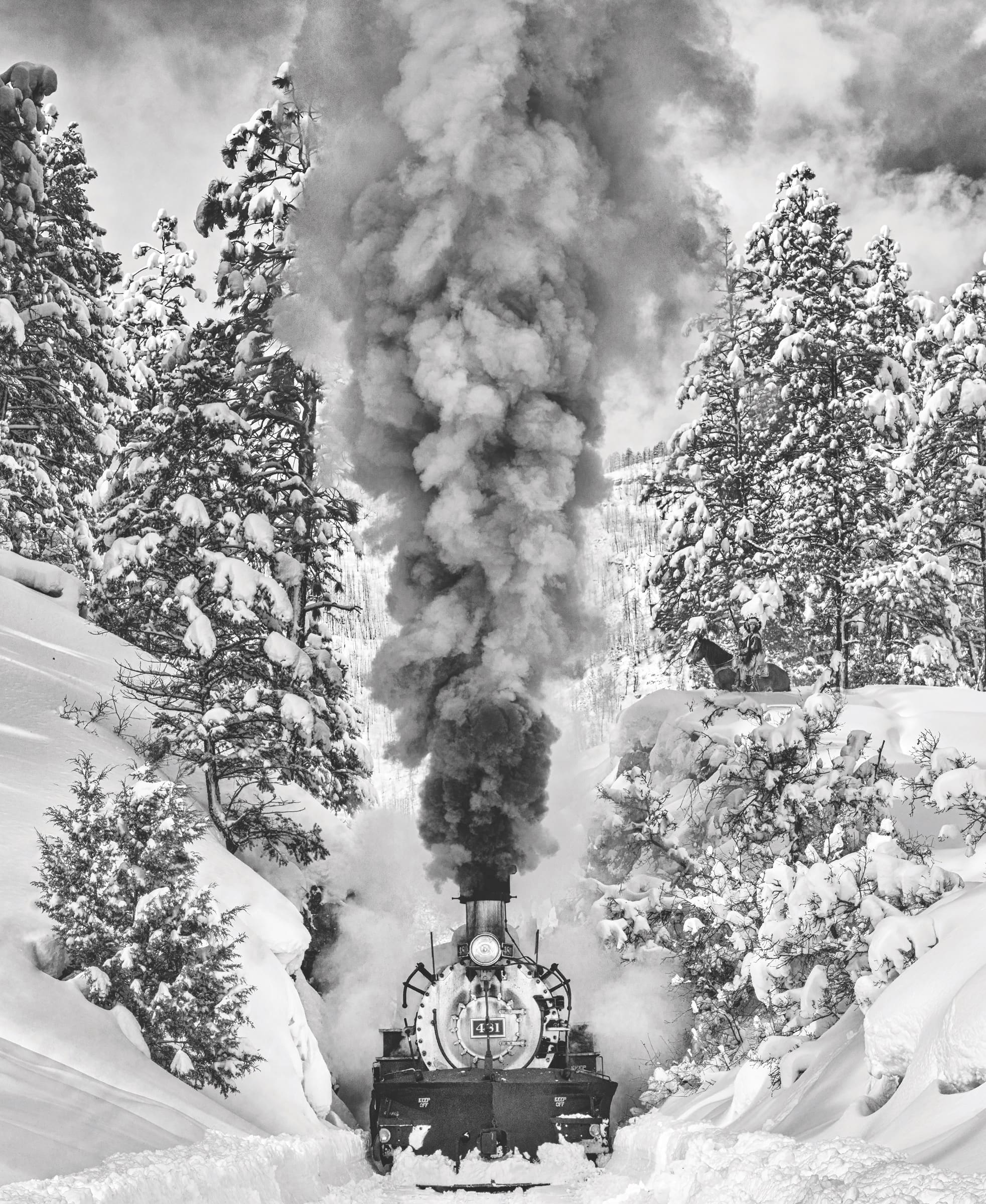
Parts Unknown | Durango, Colorado, 2023 | “When we shoot in the winter, weather plays a large part in our planning, but given the speed at which weather can change, it does not pay to be too prescriptive too far out from shooting days,” Yarrow expounds. “But we continually check weather patterns, and within thirty-six hours of a shoot, we tend to home in on a certain plan . . . In the Rockies, I guess there are about a dozen days a year when a big storm passes through and clears, leaving behind a winter wonderland and kind, gentle light. This is the filmmaker’s big opportunity, provided the props are in place and access is still possible. It is always challenging, but these are the days we wait for. They don’t come that often. We know the Durango to Silverton steam train well and have built up a strong friendship with the owner, Al Harper, and his wonderful team of engineers in Durango. I sensed there was an opportunity at this jaw-dropping location made famous by its appearance some fifty years ago in Butch Cassidy and the Sundance Kid. We were in town and waiting as the storm system pushed through. It had lasted thirty-six hours and left eighteen inches of new snow in the San Juan Forest that the old steam train cuts through. We had to operate fast, as the light was picking up all the time, and both teams worked quickly to get everyone in position early in the day . . . When I look at this photograph, I feel some sense of pride—it is a hell of a shot—but not pride in myself, pride in all the people who made it happen. A real team effort.”
Yarrow describes his photographs as “immersive, aesthetically tight, textural, and, hopefully, emotional.” He’s captured shots of beautiful women driving rare vintage cars with actual wolves in the passenger seat. Other pieces show scenes of cowboys and Wild West saloons that any fan of Taylor Sheridan’s latest television series should look up. Meanwhile, depicting major motion picture-worthy storytelling while also showcasing a watch by TAG Heuer, for example, combines fine art, cinema, and advertising in a way few have achieved. Indeed, he often draws direct inspiration from his favorite films to re-create iconic scenes and evoke the emotions they gave him as a viewer.
His action shots and those evocative pieces with humans and wild animals together are captured after a meticulous setup to ensure lighting is consistent and minimal editing is needed—and yes, they are all authentic, not digitally manipulated.
“I try and remember that there needs to be something in an image to allow it to transcend,” he continues. “Authenticity is always a good start. The printing is also strong, and we see that as an integral part of the brand. Clients know a David Yarrow print when they see it; there is a very consistent tonal range.”
Identifying the most challenging part of his work, Yarrow says, is easy: idea creation. As someone whose creative work is also his livelihood, he must focus on what will sell, not just what he wants to shoot. “It must be creative, and then it must be commercial—99 percent of ideas break down at these two levels,” he explains. “I often have periods when ideas don’t come easily and I must be patient. The most rewarding part is good execution. I would also say it is a treat to meet some of the people I have come across in the world of Hollywood or elite sport.”
This sales-minded focus is ideal when working with some of the top interior design firms in the world, which Yarrow does. Getting his work in the hands of collectors is often thanks to having an interior designer introduce their clients to the world of David Yarrow. “The best-selling interior design firms are passionate about what they do and have a deep client base that has remained loyal over the years. These relationships can come in the most unlikely of places.”
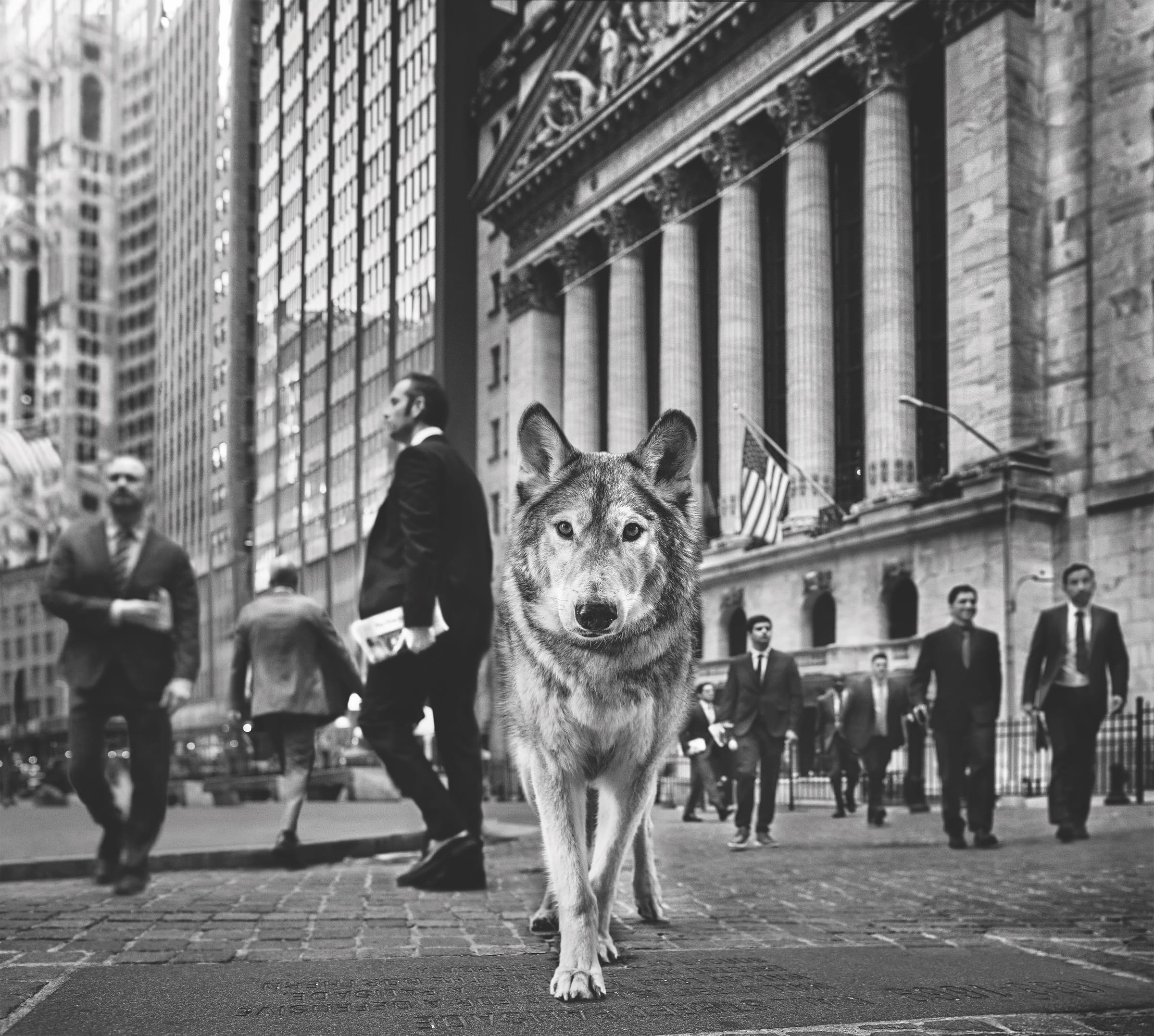
Wall Street | Manhattan, New York, 2023 | “Someone was going to make this shot, and I always felt we had a chance to bring all the constituent parts together. We have some history with ideas based on Scorsese’s epic film, and the fact that I once worked on Wall Street added a sense of purpose as well as a personal connection,” says Yarrow. “Made of white Georgian marble, the temple-like facade of the NY Stock Exchange Building was inspired by the Roman Pantheon, and the six Corinthian columns make for a majestic backdrop. It is an unmistakable building, and when it opened its doors in 1903, it was a big moment in the history of America. I needed a quiet day to shoot on set, and that always pointed to a Sunday, but I also wanted an emphatic written reference as well as the architectural reference somewhere in the frame. The green street signposts of ‘Wall Street’ were too high to incorporate meaningfully into the picture, and I saw no real workable alternative . . . But by some extraordinary stroke of luck, when I found my shooting location lying on the cobbled street, there, smack in front of me on the road, was a museum plate that spoke of Wall Street’s history. I had no idea it was there, and at the margin, this detail makes all the difference.”
One prime example is Christopher Collection, a top-selling interior design firm based in Homewood, Alabama, just outside Birmingham. Yarrow’s partnership with founder and architect Chris Reebals and his team has been one of his top-grossing retail endeavors, selling over $400,000 of art annually.
It must be creative, and then it must be commercial
“David’s work is timeless,” Reebals says. “When contemplating art, I always envision the piece in a space. David’s work enhances a room like no other art. It creates a depth and movement that are inspiring, timeless, and engaging. His art stares back at you. It pulls you in. It makes you feel like you are there. It is crisp and clean yet organic and extemporaneous. Somehow his art, while inanimate, is not static. The juxtaposition of David’s work on a designed space creates a symbiotic bond between the built environment and nature.”
Although he’s seen great commercial success for over a decade, Yarrow says seeing his work displayed in someone’s home or office still makes him feel proud and humbled. “It means that someone liked my work enough to put it on a wall above all other choices in the world. We sell a thousand photographs a year. I can’t see them all in place, but I do see a decent number, and it is always exciting. It is nice for the buyers to meet the artist and even better for the artist to meet the new owner.”
Many fans and collectors got the opportunity to meet the artist and display his work in their homes through Yarrow’s latest book, aptly titled Storytelling, released in November 2022.
“We have had events for the launch all over America and Europe. Some are very busy, like in Dallas, Denver, and LA, where we have big galleries and a large collector base. I guess over two years, over twenty thousand people will have attended the shows,” he expounds. “But sometimes it is the quirky places with small bookstores that bring the most fun memories, as it is always people that make the places. But my favorite event was in Edinburgh, Scotland, as it was so special to come home and see friends and family.”
Storytelling is Yarrow’s fifth coffee-table book filled with his work, preceded by: Nowhere (2007), which depicts some of the world’s most remote and isolated locales; Encounter (2013), a collection of eighty-seven powerful black-and-white photos of wildlife and indigenous communities; Wild Encounters (2016), which captures “the splendor and very soul of what remains wild and free in our world through incredibly intimate, close-enough-to-touch portraits”; and his eponymous David Yarrow (2019), featuring over 130 of David’s images and a foreword by Cindy Crawford.
The most challenging part of the book-creation process, according to the photographer, is culling down which images to use. “Most coffee-table books have some weaker pages, and this is also true of photography books,” he says. “We call these weaker shots ‘fillers,’ and my goal is always to have as few as possible. If Storytelling had been delayed for six months to allow for more filming time, I guess we could have replaced about ten ‘fillers’ out of 140 images. That’s not bad, and I am quite tough on myself. The biggest mistake photographers can make is to give their own work a weak edit.”
Book publishing is a tough business, Yarrow says, but his belief in his latest volume remains high after great reception from fans in the past eight months. “The average coffee-table book sells four thousand copies; I think we will beat that!”
As for what’s coming up next for the photographer, his guess is as good as ours. It all goes back to enjoying the journey and the stories he will hear, see, capture, and create along the way.
No matter what his next chapter holds, Yarrow is excited about it: “Whether I continue to explore the Wild West, 1970s ski resorts, iconic sportsmen—all themes that have guided me of late—or an entirely new genre, I want to pay homage to great stories. We must break new ground and continue to raise the bar. My best pictures are the ones I have not yet taken.”
— V —
To learn more, visit www.DavidYarrow.photography or follow him on Instagram @davidyarrow. You can shop prints on his website or visit Christopher Collection in Homewood, Alabama, and at ChristopherCollection.com.
Share This Story!
KEEP UP WITH THE LATEST STORIES FROM VIE





